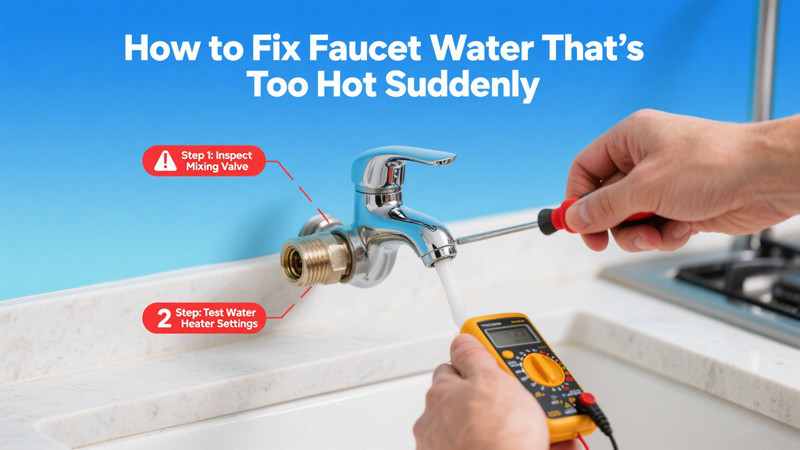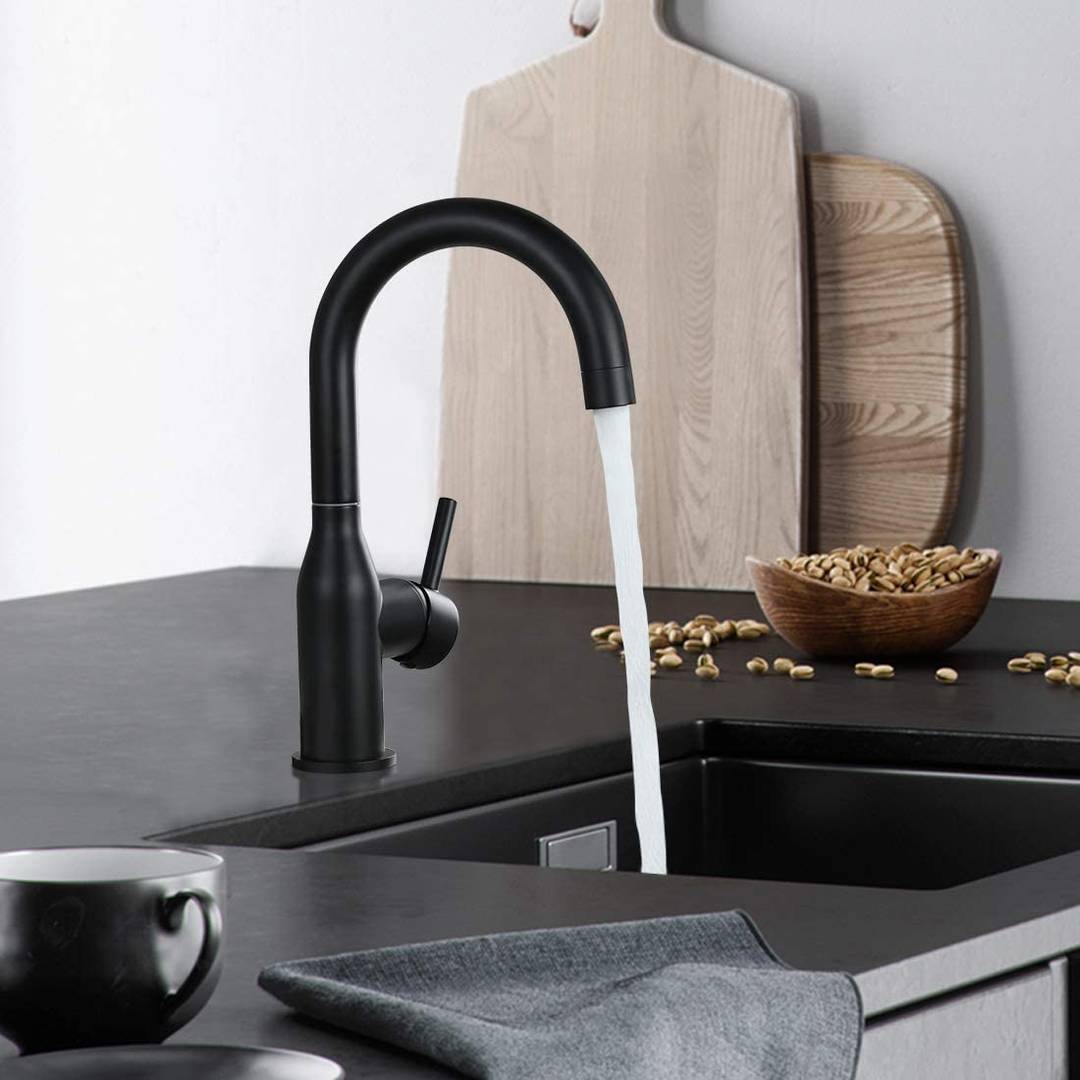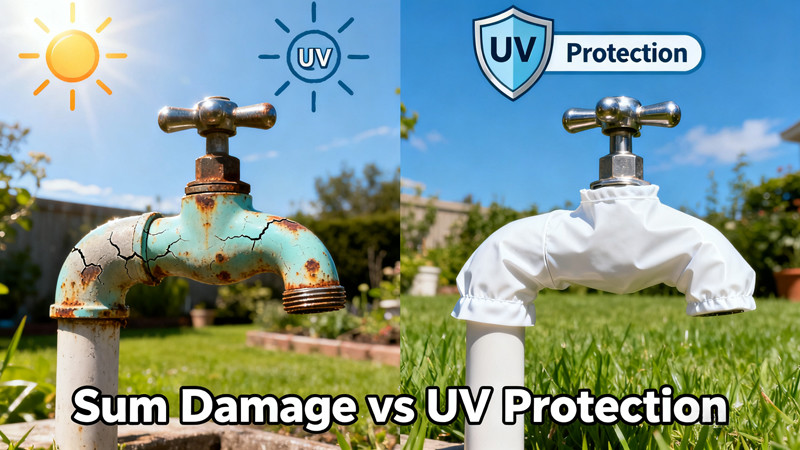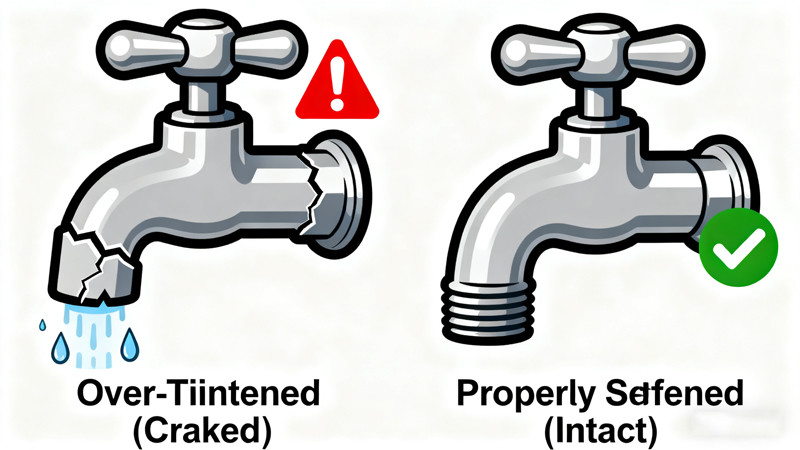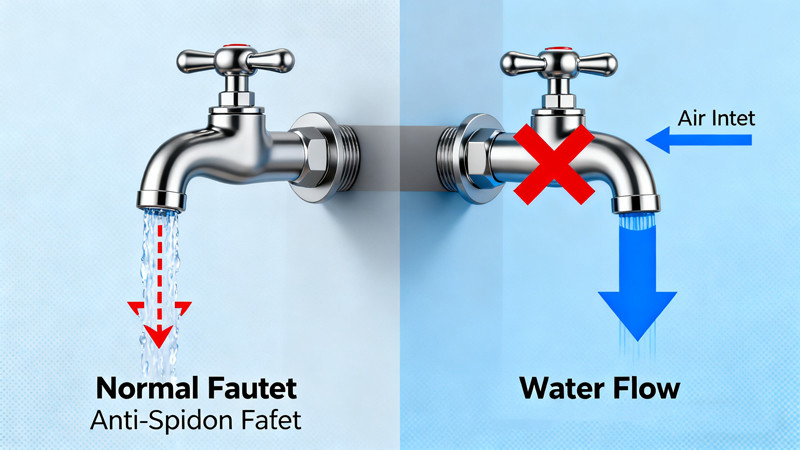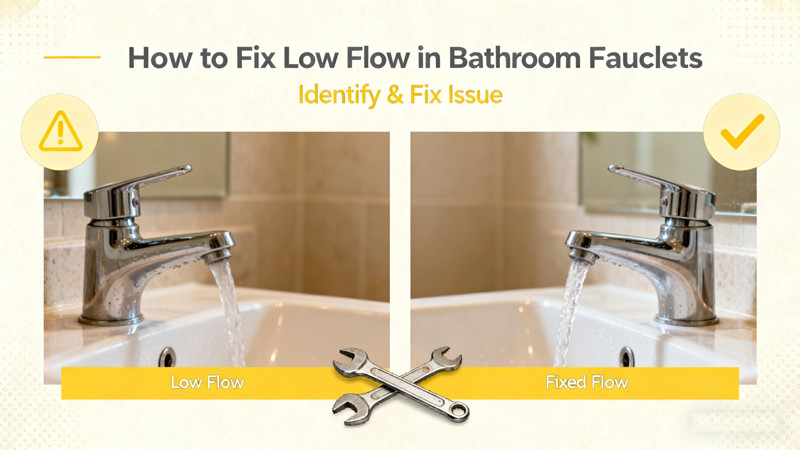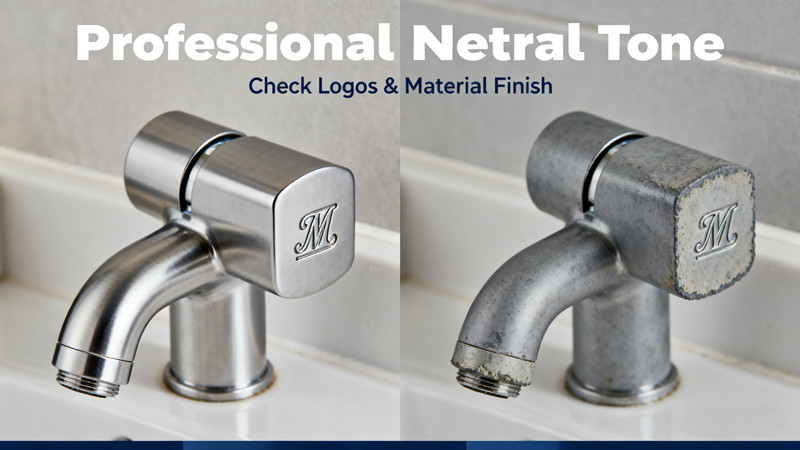Few things are more frustrating—or potentially dangerous—than turning on a faucet and being met with scalding hot water when you weren’t expecting it. Whether it happens in your kitchen sink, bathroom sink, or shower, water that suddenly comes out way too hot can be a sign of underlying plumbing issues. The good news is, in many cases, you can diagnose and even fix the problem yourself.
This guide will walk you through why your faucet water might suddenly be too hot, what steps you can take to troubleshoot the issue, and when it’s time to call in a plumber.
Why Your Faucet Water Might Suddenly Be Too Hot
Before jumping into solutions, it’s helpful to understand the possible causes behind the problem. Here are the most common reasons faucets start delivering scalding water unexpectedly:
- Water Heater Temperature Setting Is Too High
If your water heater thermostat is set too high, it can cause dangerously hot water at all your faucets. The U.S. Department of Energy recommends keeping water heater settings around 120°F to balance comfort, safety, and energy efficiency. - Thermostat Malfunction
Even if your water heater is set correctly, a faulty thermostat might not regulate the temperature properly, leading to overheating. - Failed Mixing Valve
Many modern faucets and shower systems have a mixing valve that blends hot and cold water to maintain a consistent temperature. If the valve is stuck or broken, it can allow too much hot water through. - Sediment Buildup
Over time, minerals in water accumulate inside the water heater tank. This sediment can trap heat, causing water to overheat and come out excessively hot at the faucet. - Pressure-Balancing Issues
In showers especially, a sudden change in household water pressure (such as when someone flushes a toilet) can cause the hot water to spike unexpectedly if the pressure-balancing valve isn’t working correctly.
Step-by-Step Fixes for Faucet Water That’s Too Hot
Now that you know the potential causes, let’s dive into the practical steps you can take to troubleshoot and fix the problem.
1. Check the Water Heater Temperature Setting
- Locate your water heater (gas or electric).
- Find the temperature dial or digital control.
- Make sure it’s set around 120°F (49°C). If it’s set higher, lower it and give the system a couple of hours to adjust.
- Test your faucets again to see if the water has normalized.
If lowering the temperature fixes the issue, you’re done. If not, move on to the next steps.
2. Test the Thermostat for Malfunction
If you already set the water heater correctly but water is still too hot, the thermostat might not be reading or regulating properly. Signs of a bad thermostat include:
- Inconsistent water temperature
- Water that remains scalding even when the setting is lowered
- Water heater running longer than usual
In this case, you may need a plumber to test or replace the thermostat.
3. Inspect and Clean the Mixing Valve
Faucets, especially single-handle ones, have cartridges or mixing valves that regulate hot and cold water. If the valve gets stuck or clogged with debris, it may allow only hot water to flow.
- Shut off water supply to the faucet.
- Remove the handle and access the cartridge or mixing valve.
- Clean out any mineral buildup or debris.
- If damaged, replace with a new part (available at hardware stores).
For showers, pressure-balancing valves might need adjustment or replacement if you notice sudden spikes when other water sources in the house are used.
4. Flush the Water Heater to Remove Sediment
Sediment buildup not only overheats water but also reduces efficiency and shortens your water heater’s lifespan. Flushing is a relatively simple maintenance task:
- Turn off power or gas to the water heater.
- Attach a garden hose to the drain valve at the bottom.
- Run the hose to a floor drain or outside.
- Open the valve and let the tank drain until water runs clear.
- Refill the tank, restore power or gas, and test again.
Flushing should be done once or twice a year as preventative maintenance.
5. Consider Installing Anti-Scald Devices
If you live in a household with children or elderly family members, you might want an extra layer of protection. Anti-scald devices, also called thermostatic mixing valves (TMVs), are installed at faucets or on the water heater itself. These regulate temperature more precisely, preventing water from reaching unsafe levels.
When to Call a Professional
Some fixes, like adjusting the water heater temperature, are simple and safe for most homeowners. However, if you encounter any of the following, it’s best to call a licensed plumber:
- You’ve adjusted the water heater setting, but water is still too hot.
- You suspect a faulty thermostat or heating element.
- Your mixing valve replacement doesn’t resolve the problem.
- You notice other issues, such as leaks, banging pipes, or strange noises from the water heater.
A professional can quickly diagnose the root cause and recommend repairs or replacement parts, saving you time and ensuring safety.
Preventing Sudden Hot Water Surprises
Once you’ve fixed the problem, prevention is key. Here are some proactive steps:
- Check your water heater settings every few months. Sometimes adjustments get bumped accidentally.
- Schedule annual water heater maintenance. This includes flushing the tank and inspecting components.
- Replace aging water heaters. Most units last 8–12 years. Older systems are more prone to overheating and malfunctions.
- Install anti-scald valves. Especially useful in bathrooms where sudden hot water can cause burns.
- Monitor water pressure. If you experience frequent spikes or drops, consider a pressure regulator.
Final Thoughts
Suddenly scalding water from your faucet or shower isn’t just uncomfortable—it can be dangerous. Fortunately, most causes are relatively straightforward to address, from adjusting your water heater’s thermostat to cleaning or replacing a faulty mixing valve. Regular maintenance, such as flushing your water heater, can also go a long way in preventing overheating issues.
If you’ve tried the simple fixes but the problem persists, don’t hesitate to call a plumber. Sometimes the issue lies deeper within the system, and professional help ensures both safety and lasting results.
By staying proactive and addressing the problem early, you can enjoy a steady, comfortable water temperature throughout your home—without the risk of surprise burns.
 WOWOW Faucets
WOWOW Faucets